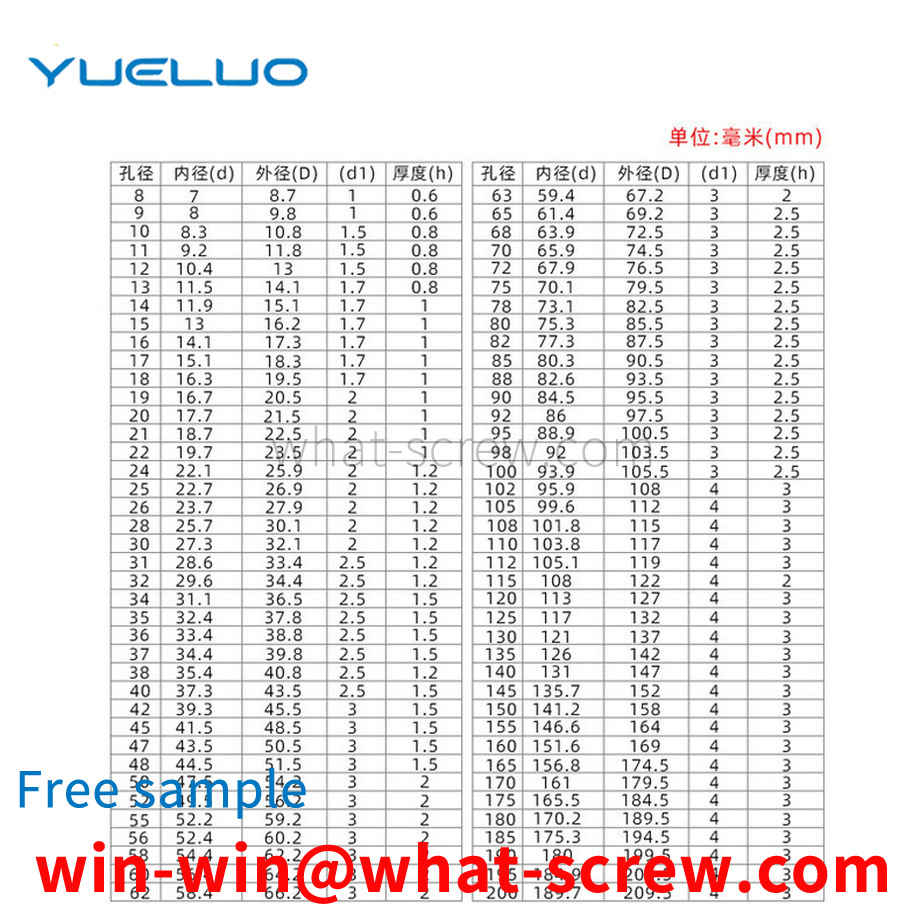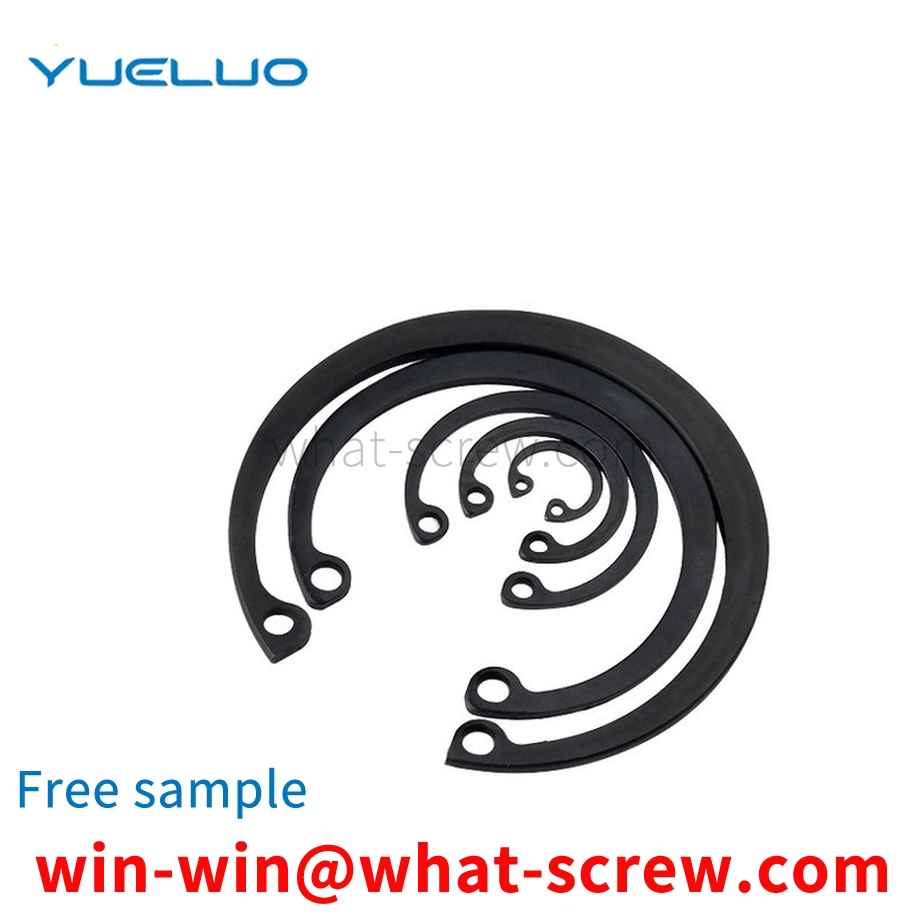Stainless steel nuts generally have or become loose during use, which mainly depends on the thread. As for the threaded sleeve, it is a new type of threaded fastener, which is a spring-shaped inner and outer thread concentric body precisely machined from stainless steel wire with high-precision diamond cross-section. Of course its performance is also very good. The following are the following methods of loosening stainless steel nuts: 1. On the mechanical parts loaded with metal or non-metallic materials (such as aluminum, magnesium and other light alloy engineering materials), it can form high strength, wear resistance, high precision standard internal thread. Such as applications: high-voltage switchgear, hydraulic machinery, welding equipment |, tobacco machinery, microwave communications, auto parts, air separation equipment, coal machinery, power machinery, textile and chemical fiber machinery, etc.
Swimming self-locking nut GJB 125.1~125.6-86 The double-ear sealing swimming self-locking nut is composed of four parts: sealing cover, self-locking nut, pressure ring and sealing ring. It has compact structure and reliable sealing, and is suitable for products whose working pressure is not more than 2atm, working medium is gasoline, kerosene, water or air, and the operating temperature is -50~100℃. However, it has certain difficulties in the manufacturing process and air tightness test.
Commonly used screw materials in my country are No. 45 steel, 40Cr, ammoniated steel, 38CrMOAl, superalloy, etc. 1) No. 45 steel is cheap and has good processing performance, but poor wear resistance and corrosion resistance. Heat treatment: quenched and tempered HB220-270, high-frequency quenched HRC45--48. 2) The performance of 40Cr is better than that of No. 45 steel, but it is often plated with a layer of chromium to improve its corrosion resistance and wear resistance. However, the requirements for the chrome plating layer are relatively high. If the plating layer is too thin, it is easy to wear, and if it is too thick, it is easy to peel off. After peeling off, it will accelerate the corrosion, and it has been rarely used. Heat treatment: quenched and tempered HB220—270, hard chrome plated HRC>553) nitrided steel, 38CrMoAl have excellent comprehensive properties and are widely used. Generally, the nitride layer reaches 0.4-0.6 mm. However, this material has low resistance to hydrogen chloride corrosion and is relatively expensive. 4) The superalloy material is superior to other materials. This material does not need coating, and is mainly used for the raw halogen-free screw of injection molding machine. The material has high oxidation resistance and corrosion resistance.
Usually, the forming of the bolt head adopts cold heading plastic processing. Compared with the cutting process, the metal fiber (metal wire) is continuous along the shape of the product, and there is no cut in the middle, thus improving the strength of the product, especially the mechanical properties. The cold heading forming process includes cutting and forming, single-station single-click, double-click cold heading and multi-station automatic cold heading. An automatic cold heading machine performs multi-station processes such as stamping, heading forging, extrusion and diameter reduction in several forming dies. The processing characteristics of the original blank used by the single-station or multi-station automatic cold heading machine are determined by the size of the bar with a length of 5-6 meters or the wire rod with a weight of 1900-2000KG, that is, the characteristics of the processing technology. The point is that cold heading does not use pre-cut single blanks, but uses the automatic cold heading machine itself to cut and upset (if necessary) blanks from bars and wire rods. Before extruding the cavity, the blank must be shaped. A blank that meets the technological requirements can be obtained by shaping. Before upsetting, reducing and positive extrusion, the blank does not need to be shaped. After the blank is cut, it is sent to the upsetting and shaping station. This station can improve the quality of the blank, reduce the forming force of the next station by 15-17%, and prolong the life of the die, and the bolts can be made with multiple diameter reductions. The precision that can be achieved by cold heading is also related to the selection of the forming method and the procedure used. In addition, it also depends on the structural characteristics of the equipment used, the process characteristics and its state, the precision of the tool and die, the life and the degree of wear. For high-alloy steel used in cold heading forming and extrusion, the roughness of the working surface of the cemented carbide mold should not be greater than Ra=0.2um. When the roughness of the working surface of this type of mold reaches Ra=0.025-0.050um, it has the highest life.
According to the force of the connection, it is divided into ordinary and hinged holes. According to the shape of the head: there are hexagonal head, round head, square head, countersunk head and so on. Among them, the hexagonal head is the most commonly used. Generally, countersunk heads are used where connections are required. [1] The English name of the riding bolt is U-bolt. It is a non-standard part. The shape is U-shaped, so it is also called a U-bolt. There are threads on both ends that can be combined with nuts. It is mainly used to fix tubular objects such as water pipes or sheets such as The leaf spring of a car is called a horse-riding bolt because it fixes the object in the same way that a person rides on a horse. According to the length of the thread, it is divided into two categories: full thread and non-full thread. [2] According to the thread type, it is divided into two types: coarse thread and fine thread. The coarse thread is not displayed in the bolt mark. The bolts are divided into eight grades: 3.6, 4.8, 5.6, 6.8, 8.8, 9.8, 10.9, and 12.9 according to their performance grades. Among them, the bolts above grade 8.8 (including grade 8.8) are made of low-carbon alloy steel or medium-carbon steel and are heat-treated (quenched). + Tempering), commonly known as high-strength bolts, and below grade 8.8 (excluding 8.8) are commonly known as ordinary bolts. [2] Ordinary bolts can be divided into three grades: A, B, and C according to the production accuracy. Grades A and B are refined bolts, and grade C is rough bolts. For connecting bolts for steel structures, unless otherwise specified, they are generally ordinary rough grade C bolts. There are differences in the processing methods of different grades. Usually the corresponding processing methods are as follows: ① The bolts of grade A and B bolts are processed by lathes, with smooth surfaces and accurate dimensions. High, rarely used; ②C-grade bolts are made of unmachined round steel, the size is not accurate enough, and its material property grade is 4.6 or 4.8. The deformation is large during shear connection, but the installation is convenient and the production cost is low. It is mostly used for tensile connection or temporary fixation during installation. [2]
We have many years of experience in the production and sales of screws, nuts, flat washers, etc. The main products are: ordinary screws, small outer diameter 4.2, industrial aluminum profile accessories, hexagon socket head 6 angle bolts and other products, we can provide you with suitable tightening screws for you. Firmware Solutions.



















 Service Hotline
Service Hotline




